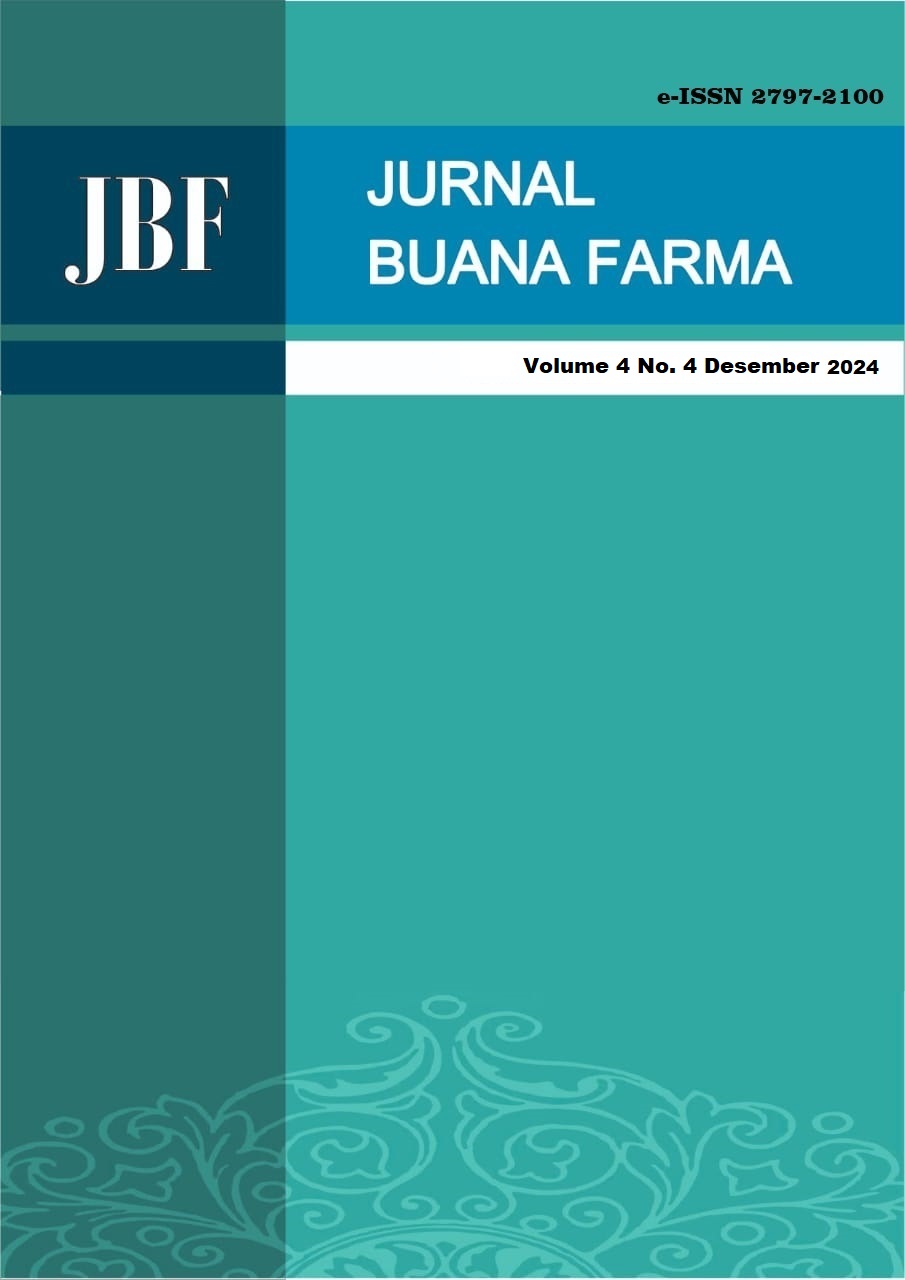EFEKTIVITAS BIOETANOL DARI LIMBAH BIJI MANGGA SEBAGAI HAND SANITIZER TERHADAP BAKTERI Staphylococcus aureus
Abstract
Indramayu is a mango producing area in West Java Province. There are many varieties of mango types cultivated in Indramayu, including gedong gincu, gajah, harum manis, cengkir, golek, lali jiwa, agrimania and manalagi. In Indramayu, mangoes are sold as fruit and dodol. Mango seeds are simply thrown away or used as seeds. Mango seeds contain 81.3% starch per 100 grams. The starch in mango seeds can be made into flour as a raw material for making bioethanol. Bioethanol with a content of 70% can be used as an antiseptic to kill bacteria, viruses and fungi so that it can be used as a basic ingredient for making hand sanitizer. The method for making hand sanitizer from mango seed bioethanol goes through the Liquification Process, Saccharification Process, Fermentation Process, Distillation Process, Testing Bioethanol Content, Making Hand Sanitizer and Testing the Effectiveness of Hand Sanitizer on Staphylococcus aureus Bacteria using the disk diffusion method. The results of testing the bioethanol content after the multistage distillation process is 74%. Then bioethanol is mixed with Glycerin 99,7%, H2O2 3% and Sterile Aquadest to make hand sanitizer. The results of testing the effectiveness of hand sanitizers on Staphylococcus aureus bacteria showed that the diameter of the inhibition zone was 6 mm. Based on the Davis and Stout criteria, the effectiveness of hand sanitizer from mango seed waste bioethanol in inhibiting the growth of Staphylococcus aureus bacteria is medium.
References
Bakhri, S. Pembuatan Desinfektan Berbasis Alkohol 70 % Dan Asam Asetat. Jurnal Teknik Kimia 2022; 1(5); pp; 70–78.
Dewi, N. et al. Pembuatan Tepung dari Biji Mangga. Chemical Engineering Journal Storage (CEJS) 2022; 2(4); p; 1.
Falaah, M. and Kusumayanti, H. Proses Fermentasi pada Produksi Bioetanol Dedak Padi dengan Hidrolisis Enzimatis. Jurnal Metana 2021; 17(2); pp; 81–87.
Gunawan, L. Van and Effendy, M. Pengaruh Campuran Bioetanol Biji Durian pada Bahan Bakar Pertalite terhadap Performa Mesin dan Emisi Gas Buang Kendaraan. Jurnal Rotasi 2019; 21(2); p; 76-81.
Gustina, M. et al. Pengaruh Lama Waktu Fermentasi Terhadap Kadar Bioetanol Dari Pati Ubi Jalar Ungu (Ipomea batata L). Chemical Engineering Journal Storage (CEJS) 2022; 2(2); p; 116.
Hendrawati, T.Y., Ramadhan, A.I. and Siswahyu, A. Pemetaan bahan baku dan analisis teknoekonomi bioetanol dari singkong (Manihot utilissima) di Indonesia. Jurnal Teknologi 2019; 11(1); p; 38.
Itiki, R. and Roy Chowdhury, P. Fast deployment of COVID-19 disinfectant from common ethanol of gas stations in Brazil: COVID-19 disinfectant from common ethanol. Health Policy and Technology 2020; 9(3); pp; 384–390.
Jiang, J. et al. Ethanol-based disinfectant sprays drive rapid changes in the chemical composition of indoor air in residential buildings. Journal of Hazardous Materials Letters 2021; 2; p; 100042.
Kerina, D.Y., Hardoyo, H. and Atmono, A. Fermentasi Bioethanol Dari Bahan Baku Biji Buah-Buahan Menggunakan Ragi Roti Dan Ragi Tape. Jurnal Lingkungan dan Sumberdaya Alam (JURNALIS) 2022; 5(1); pp; 24–34.
Kim, H.W. et al. A fast and effective alternative to a high-ethanol disinfectant: Low concentrations of fermented ethanol, caprylic acid, and citric acid synergistically eradicate biofilm-embedded methicillin-resistant Staphylococcus aureus. International Journal of Hygiene and Environmental Health 2020; 229(July); p; 113586.
Komala O, Yulianita and Siwi Fuji raka. Aktivitas Anti Jamur Ekstrak Etanol 50% Dan Etanol 96% Daun Pacar Kuku Terhadap Trichopyton Mentagrophytes. Jurnal Illmiah Ilmu Dasar dan Lingkungan 2019; 19(April); pp; 12–19.
Masykuroh, A. and Puspasari, H. Aktivitas Anti Bakteri Nano Partikel Perak (NPP) Hasil Biosintesis Menggunakan Ekstrak Keladi Sarawak Alocasia Macrorrhizosterhadap Staphylococcus aureus dan Escherichia Coli. Bioma : Jurnal Biologi Makassar 2022; 7(1); pp; 76–85.
Punia Bangar, S., Kumar, M. and Whiteside, W.S. Mango seed starch: A sustainable and eco-friendly alternative to increasing industrial requirements. International Journal of Biological Macromolecules 2021; 183; pp; 1807–1817.
Putri, T. et al. Lidah Buaya Terhadap Antiseptik Hand Sanitizer Gel. 2022; 8(9); pp; 1000–1008.
Taufik, M. et al. Making Hand sanitizer from Eucalyptus citriodora plants as an economic opportunity in the new normal era. Abdimas Talenta: Jurnal Pengabdian Kepada Masyarakat 2020; 5(2); pp; 519–526.













